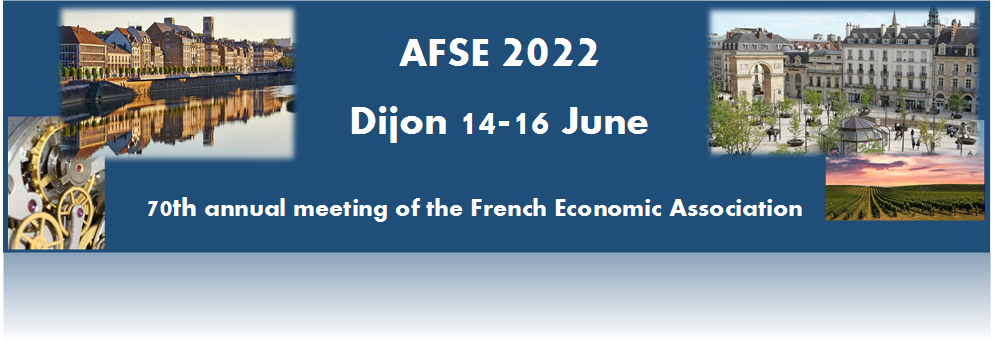
|
|
|
Program > Keynotes lecturesTuesday, June 14th, 9:30-10:30 am Inaugural Lecture Andrew J. Plantinga, Professor, Bren School of Environmental Science and Management, University of California, Santa Barbara, USA Environmental Markets: Is the Promise Fulfilled? It has long been recognized that common-pool resources, if left unmanaged, tend to be inefficiently over-extracted. This “problem of the commons" remains pervasive today as many natural resources around the world deplete at unprecedented rates. Environmental markets are a promising solution. By assigning property rights to resources, incentives for over-extraction can be curtailed and welfare increased through more efficient use. These appealing predictions have led to the adoption of environmental markets for nearly every common-pool resource - from fisheries, forests, water, to the global climate. Nevertheless, the effectiveness of environmental markets is predicated on a number of stylized theoretical assumptions, many of which are violated in practice. Thus, it is an empirical question whether environmental markets will be effective under real-world conditions. In this talk, I will review the empirical literature on the performance of environmental markets, emphasizing identification challenges and solutions. I will conclude with a detailed discussion of my recent paper on groundwater markets (Ayres, A.B., Meng, K.C., and A.J. Plantinga. 2021. Do Environmental Markets Improve on Open Access? Evidence from California Groundwater Rights. Journal of Political Economy 129(10):2817-2860).
Tuesday, June 14th, 3:15-4:15 pm Keynote Lecture in Urban Economics Kristian Behrens, Professor, Département des Sciences Economiques, Université du Québec à Montreal, Canada "Prime location" (co-authored with Gabriel Ahlfeldt and Thilo Albers) We harness big data to detect prime locations—large clusters of knowledge-based tradable services in 125 global cities and track changes in the within-city geography of prime service jobs over a century. Prime services are less spatially concentrated and prime locations are farther away from historic cores in historically smaller cities that did not develop early public transit networks. We rationalize these novel stylized facts empirically and theoretically. External returns to scale give rise to multiple equilibria in the city-internal distribution of prime services. The resilience of historic prime locations in historically large cities originates at least partially from endogenous durable transport networks.
Wednesday, June 15th, 11:00-12:00 am J-J Lafont Lecture Marzena J. Rostek, Professor, Juli Plant Grainger Distinguished Chair of Economics, University of Wisconsin-Madison"Financial Market Design and Market Power" In recent years, one of the most salient developments in economic research has been the work on market design motivated by new data and new questions concerning market fragmentation and imperfect competition. Parallel developments have occurred in other markets. New data on market concentration and spatial data on market fragmentation continues to be reported for virtually every sector of the economy, including industries that have traditionally been analyzed using competitive models of markets which are “centralized” in some sense. This talk will review recent advances in the literature on (primarily though not exclusively financial) market design. Special focus will be on the demand for new methods - theoretical and empirical - brought by the need to account for market fragmentation and imperfect competition. The talk will discuss open problems, challenges, and potential insights.
Thursday, June 16th, 11:15-12:15 am
Presidential Lecture
Olivier Garnier, Managing Director of the Banque de France and President of the President of the French Economic Science Association (AFSE)
"A balance between art and science: 15 years of unconventional monetary policies"
During the Great Moderation era from the mid-1980s to 2007, both central bankers and academics had grown increasingly confident in the science of monetary policy. The Great Financial Crisis in the late 2000s initiated a reversal in terms of monetary policy design and instruments used. This has opened a period of many innovations, from open-ended liquidity provision and asset purchase programs to negative interest rates and forward guidance. Those innovations have been – at first glance – more inspired by the crafts and know-hows of central bankers than from macroeconomic research. Yet, this broad narrative misses the changing role of research which has been switching from the design of monetary rules to a search for understanding the interactions between finance and macro and how unconventional policy instruments impact macro aggregates Thursday, June 16th, 1:45-2:45 pm
Special Guest Lecture
“Past, Present and Future Developments for Spatial Econometrics Models in R”
An overview of the current development and future plans for the econometric analysis of spatial cross sectional data in R will be presented, focusing in particular on three libraries and their applications: sphet, spldv and hspm. sphet has been under development for the last 10 years or so and deals with the GMM estimation of spatial cross sectional models. Recently, interesting features have been added such as a full treatment of impacts estimates and inference (Piras and Postiglione, 2021). The second library deals with the estimation of spatial limited dependent variables models (Piras and Sarrias, 2022a; 2022b). In particular, it offers a battery of one and two step GMM estimators for the probit and logit models. Finally, hspm, which is only at the initial stage of development, has to do with the development of spatial models with heterogenous coefficients.
|

